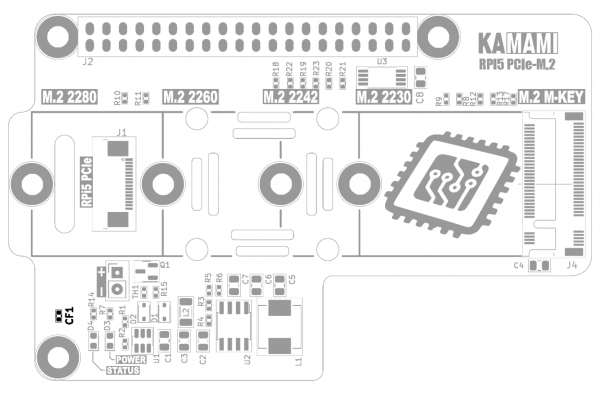KAmodRPi5 PCIe-M.2: Difference between revisions
From Kamamilabs.com - Wiki
| Line 1: | Line 1: | ||
__jzpdf__ | __jzpdf__ | ||
===== Description ===== | ===== Description ===== | ||
<b>[https://kamami.pl/ | <b>[https://kamami.pl/en/communication-modules/1188499-kamodrpi5-pcie-m2-nvme-m2-disk-adapter-for-raspberry-pi-5-5906623432912.html KAmodRPi5 PCIe-M.2]</b> - NVME M.2 Drive Adapter for Raspberry Pi 5 | ||
<center> | <center> | ||
[[File:KAmodRPi5 PCIe-M2 f1x.jpg|none|800px|thumb|center]] | [[File:KAmodRPi5 PCIe-M2 f1x.jpg|none|800px|thumb|center]] | ||
Revision as of 15:53, 26 October 2024

Description
KAmodRPi5 PCIe-M.2 - NVME M.2 Drive Adapter for Raspberry Pi 5
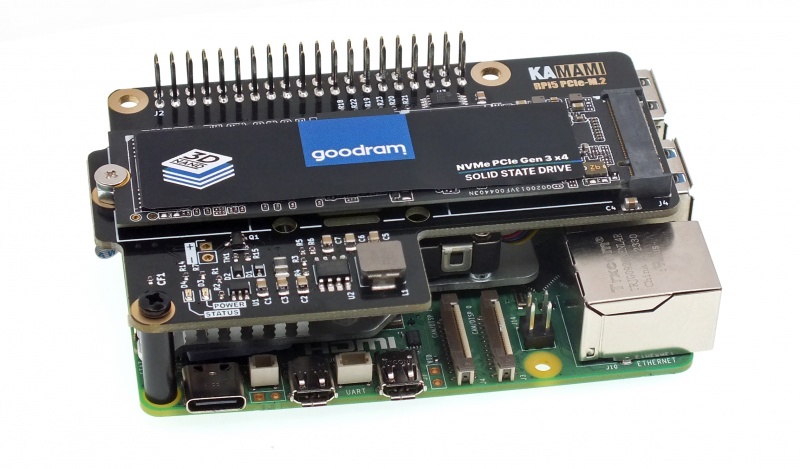
The Raspberry Pi 5 computer provides a PCI Express interface, making it compatible with many of the latest computer technology solutions. To maintain the compact dimensions of the Raspberry series, the interface was led out to a non-standard, miniature FFC connector with 16 pins and a 0.5 mm pitch, marked on the board as PCIe.
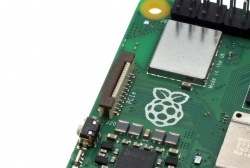
The new connector allows you to connect modern SSD drives that support the fast and reliable NVME protocol. This solution makes Raspberry Pi an ideal multimedia center or file server while maintaining small size and energy efficiency.
The interface used works in the PCI Express Gen2 x1 version and allows you to connect an NVME drive with an M.2 M-KEY type connector to the Raspberry Pi 5 computer. This requires the use of the KAmodRPi5 PCIe-M.2 adapter.
For this set to work correctly, the latest version of software for the Raspberry Pi 5 computer is required.
Only after all updates have been completed can you install the operating system image on the NVME M.2 drive and set the boot sequence to boot from the NVME M.2 drive. All necessary steps, in the order they are performed, are described in the instructions.
Basic parameters
- The adapter is designed for easy installation on the Raspberry Pi 5 board
- The connection to the Raspberry Pi 5 computer is via a 40-pin GPIO connector and a 16/0.5 FFC ribbon (optionally, it is possible to connect only using FFC ribbon)
- It takes up the typical space reserved for standard HAT expansion modules
- It allows you to connect additional HAT modules to the 40-pin GPIO connector
- It allows you to connect an NVME drive with an M.2 type connector (also called NGFF)
- Communication via the PCI Express Gen2 x1 interface (optionally also Gen3 x1)
- It allows you to mount a 2230, 2242, 2260 or 2280 size drive
- It provides a drive power supply voltage of 3.3V and a maximum current of 3A (current efficiency depends on the power of the power supply supplying power to the Raspberry Pi 5)
- It draws power from the Raspberry computer Pi 5, so you should use a power supply for Raspberry Pi 5 with the appropriate power (recommended - at least 5.1V, 3.0A, 15W)
- LED indicators signaling correct power supply and disk activity
- Dimensions 56x85 mm (56x89 mm in the middle, where there is a hole for the mounting screw of the 2280 disk)
- The design of the adapter does not block the possibility of using a radiator with a fan dedicated to Raspberry Pi 5
- Not every NVME M.2 disk is compatible with the Raspberry Pi 5 computer
- Tested and working disk models include:
- Goodram PX500 (256 GB, 2280)
- Samsung 980 (500 GB, 2280)
- Samsung PM991a (256GB, 2242)
- Patriot P310 (240GB, 2280)
- Incompatible drives (work only as additional memory, not suitable for system boot):
- Goodram PX600 (256GB, 2280)
- WD SN530 (256GB, 2242)
Standard equipment
| Code | Description |
|---|---|
|
|
|
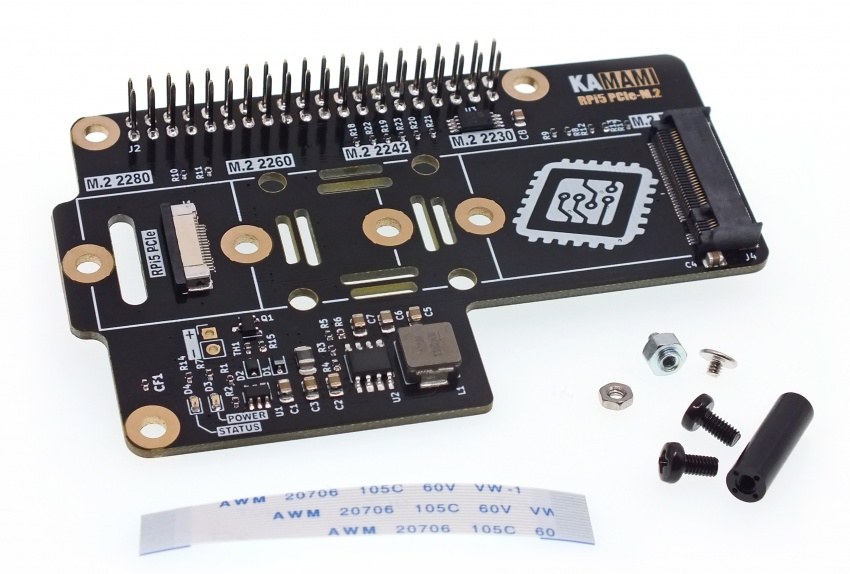
Description of the most important elements
J1 connector - RPi5 PCIe
| Connector type | Function |
|---|---|
|
FFC 16 pins, 0.5 mm pitch |
|
J2 connector - GPIO
| Connector type | Function |
|---|---|
|
Goldpin male-female connector, high |
|
J4 - M2 M-KEY connector
| Connector type | Function |
|---|---|
|
M.2 (NGFF) |
|
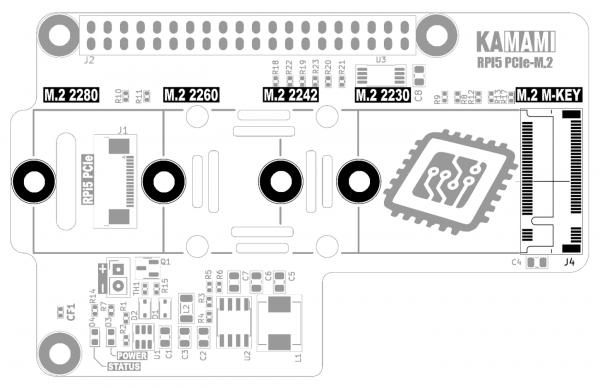
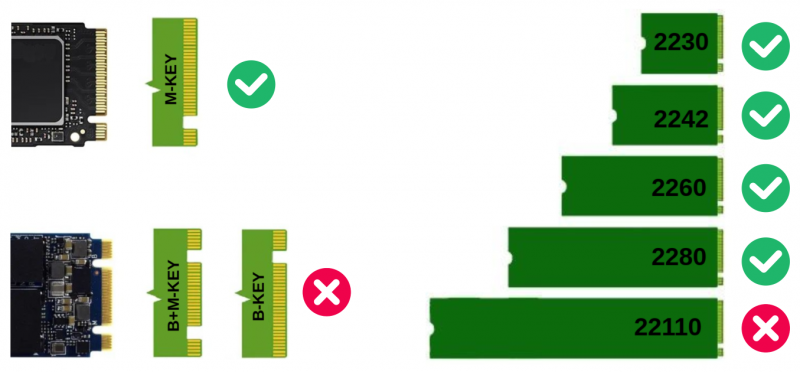
LED indicators
| Label | Function |
|---|---|
|
D3 - POWER |
|
|
D4 - STATUS |
|
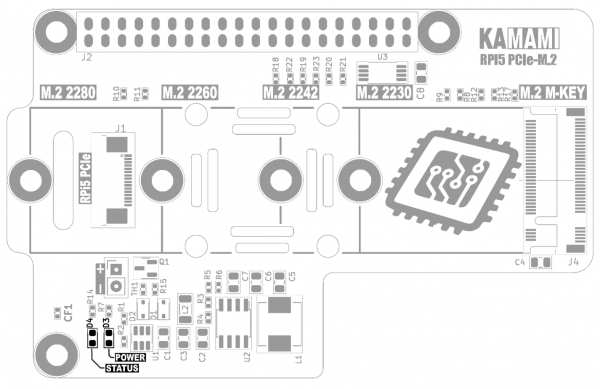
Dimensions
Dimensions 56x85 mm and match the dimensions of the Raspberry Pi 5 computer. In the middle of the board there is a hole for the 2280 disk mounting screw, at this point the dimensions are 56x89 mm.
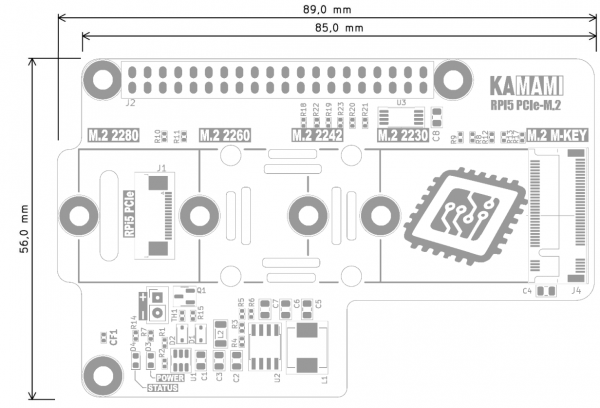
Installing an NVME M.2 Drive in the KAmod RPi5 PCIe-M.2 adapter
| Attention! Connecting and disconnecting the NVME M.2 drive should only be done when the Raspberry Pi 5 computer is turned off and disconnected from the power supply. |
First, determine the drive size (not capacity) - 2230, 2242, 2260 or 2280 drives are accepted. Once you know the drive size, install the male-female screw securing the M.2 drive in the hole corresponding to the given drive size and tighten it lightly with a nut from the bottom. The holes in the board are slightly larger to allow for positioning the screw in the optimal location for the given drive.
In the second step, connect the FFC 16/0.5 ribbon to the J1 connector (blue markers up) and tighten the lock, and put the other end of the ribbon through the hole at the J1 connector (RPi5 PCIe).
Now you can insert the NVME M.2 drive into the J4 connector (M.2 M-KEY), so that the opposite side of the drive protrudes slightly from the board. Then, gently press the drive onto the mounting screw (and if necessary) move the screw slightly so that it precisely fits into the notch on the drive. Finally, screw in the top screw and tighten the nut a little more from the bottom.
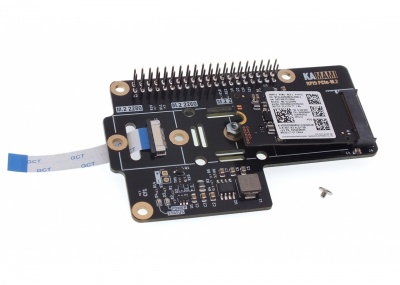 |
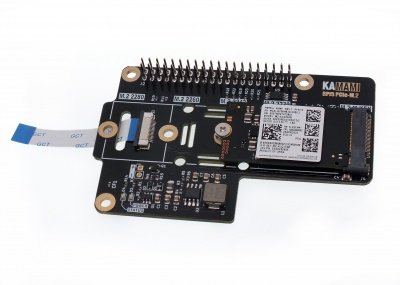 |
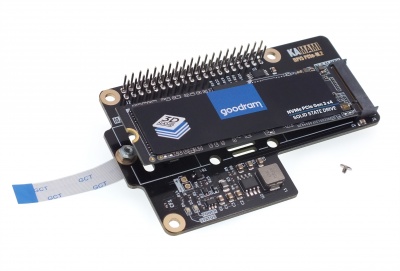 |
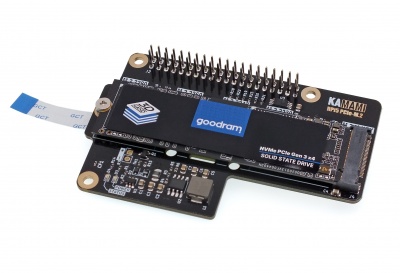 |
Mounting the KAmod RPi5 PCIe-M.2 adapter on the Raspberry Pi 5 board
The KAmod RPi5 PCIe-M.2 adapter with the ribbon cable mounted should be placed next to the Raspberry Pi 5. Now, you can easily attach the FFC ribbon cable to the PCIe connector on the Raspberry Pi 5 board.
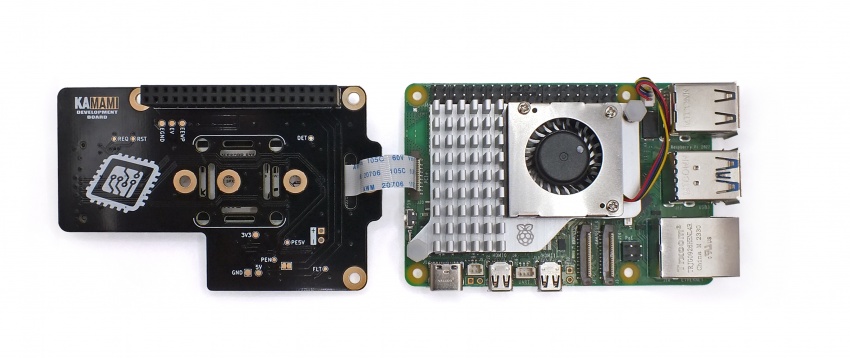
After attaching the ribbon cable, the adapter should be placed above the Raspberry Pi 5 computer, and then the lower side of the J2 connector should be placed on the 40-pin GPIO connector of the computer. Finally, it is worth installing a 16 mm high sleeve at the USBC connector, which will ensure a stable connection of the whole.
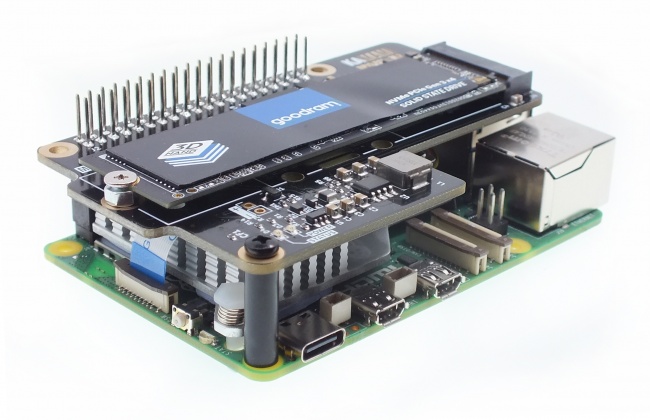
Software update process
Performing a full software update involves 3 stages:
- updating the operating system,
- updating the EEPROM memory content,
- updating the raspi-config tool.
Performing all the necessary activities requires a working Raspberry Pi 5 computer with an operating system running, e.g. from a microSD memory card and Internet access. Detailed instructions for preparing the operating system on the memory card can be found in the chapter Preparing a memory card with an operating system for Raspberry Pi 5.
Operating system update
We start Raspberry Pi 5 with the operating system prepared earlier on the memory card (at this stage the KAmod adapterRPi5 PCIE-M.2 should be dismantled). The first boot of the system may take a little longer than usual.
After the system desktop is displayed, open the console window (Terminal), e.g. using the key combination Ctrl+Alt+T and enter:
sudo apt-get update
and then:
sudo apt-get upgrade
Completion of all actions may take several minutes, depending on the number of components that require updating (the console window may display many more messages than in the example below). Confirm any questions by pressing Y(Yes).
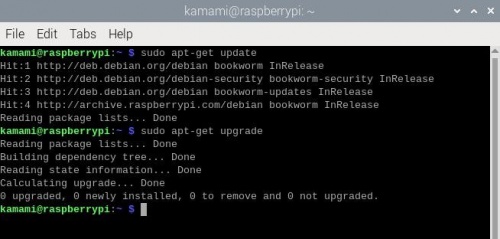
Finally, restart the system, e.g. by entering the command:
sudo reboot
Updating the EEPROM memory content
Open the console window (Terminal), e.g. using the key combination Ctrl+Alt+T and enter:
sudo rpi-eeprom-update -a
The console window may display more messages than in the example below if the content requires updating. Confirm any questions by pressing Y (Yes).
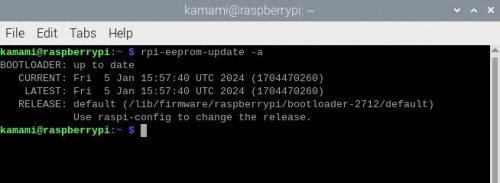
After completing the actions, it is necessary to restart the system, which we can invoke, for example, by entering the command:
sudo reboot
Updating the raspi-config tool
Open the console window (Terminal), for example, using the key combination Ctrl+Alt+T and enter:
sudo raspi-config
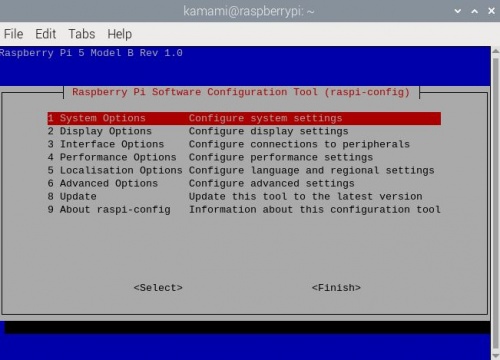
Using the arrow keys we indicate the line: 8 Update. We wait for all actions to finish. After a while, the window will open again.
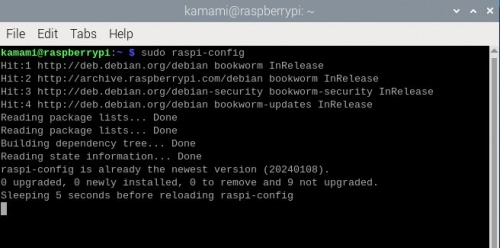
Setting the boot sequence
The boot sequence determines from which media (memory card, USB stick, NVME disk) and in what order Raspberry will start the operating system.
The sequence can be configured using the raspi-config tool, which we run by typing in the console:
sudo raspi-config
Now we select the line: 6 Advanced Options, and then A4 Boot Order. There are three options to choose from, as shown in the screenshot below:
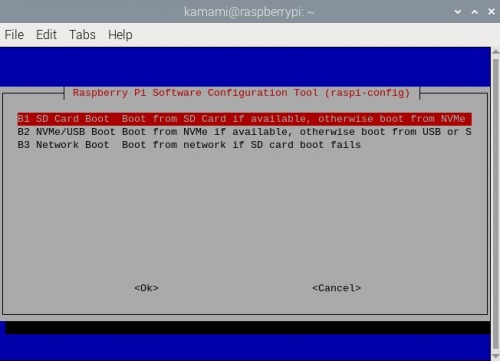
Option one: B1 SD Card Boot - causes the system to be loaded from the memory card first, and if the card is not detected, the system will be loaded from the NVME drive. This is a safe setting and should be selected.
Confirm the changes, and in the initial window select the command <Finish> (at the bottom of the window). When asked to restart the system, select <Yes>'.
Installing the system on the NVME M.2 drive
Install the KAmod RPi5 PCIe-M.2 adapter with the mounted NVME M.2 drive. Detailed instructions for these steps can be found in the chapter Mounting the KAmod RPi5 PCIe-M.2 adapter on the Raspberry Pi 5 board and Mounting the NVME M.2 drive in the KAmod RPi5 PCIe-M.2 adapter.
We start Raspberry Pi 5, open the console window (Terminal), e.g. using the key combination Ctrl+Alt+T and enter:
sudo rpi-imager
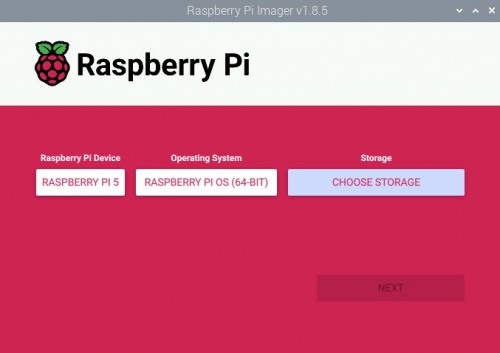
In the window that appears, select:
- computer model (Raspberry Pi Device): RASPBERRY PI 5,
- operating system (Operating System): RASPBERRY PI OS (64-BIT),
- disk (Storage): here we indicate the NVME M.2 disk, which was mounted in the KAmod RPi5 PCIe-M.2 adapter.
The further process of installing the operating system image is similar to that of the memory card and has been described in detail in the chapter 'Preparing a memory card with an operating system for Raspberry Pi 5.
Starting the system from the NVME M.2 drive
When we have a mounted NVME M.2 drive with an installed operating system image, before starting the Raspberry Pi 5 computer, we remove the memory card from the dedicated slot - it will no longer be needed. The memory card can be removed/mounted only when the computer is turned off and disconnected from the power supply.
The first start of the new operating system will take a little longer than the next ones, but after a while the desktop of the ready-to-work Raspbian installed on the NVME M.2 drive will appear. This is a new operating system and does not contain the changes we made to the system on the memory card. Therefore, we need to update the operating system and the raspi-config tool, as described earlier. We do not need to update the EEPROM content - it has not changed after changing the operating system.
Finally, using the raspi-config tool, set the boot sequence to boot from the NVME disk, which will speed up the system startup a bit, because the attempt to read from the memory card will be skipped.
Open the console window (Terminal), e.g. using the key combination Ctrl+Alt+T and enter:
sudo raspi-config
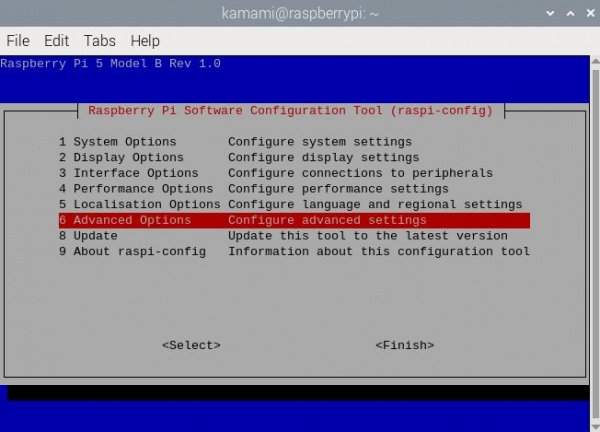
Now select the line: 6 Advanced Options, and then A4 Boot Order. We select the option: B2 NVMe/USB Boot, which causes the system to first load from the NVME disk.
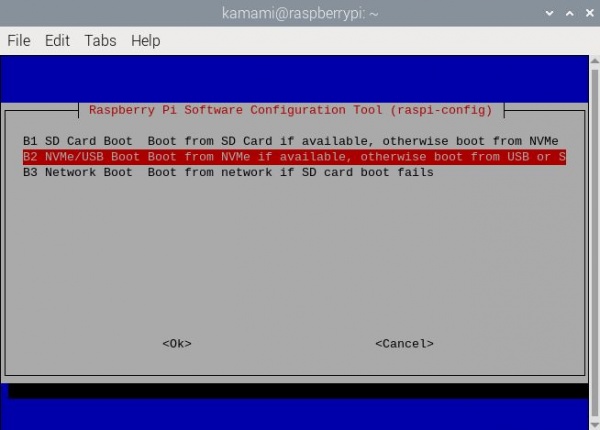
We confirm the changes, and in the initial window select the command <Finish> (at the bottom of the window). When asked to restart the system, select <Yes>'.
Additional information
The NVME M.2 disk is not visible in the system
In a situation where the disk is not visible in the system, e.g. the rpi-imager program does not have the attached disk among the available media, you should first check the correct operation of the PCIe interface. This can be done by analyzing the system boot messages. You should open the console window (Terminal), e.g. using the key combination Ctrl+Alt+T and enter:
dmesg | grep pcie
You will see content similar to that in the screenshot below:
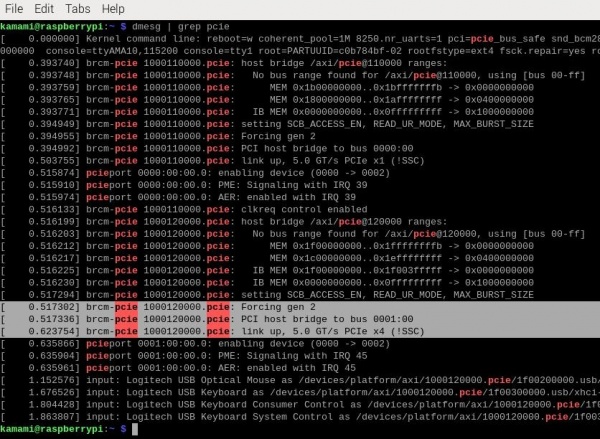
You can see information about the PCIe x4 interface, which is the internal interface of the Raspberry Pi 5 computer and is not available to the user. There should also be information about the PCIe x1 interface, which is responsible for connecting to the NVME M.2 drive:
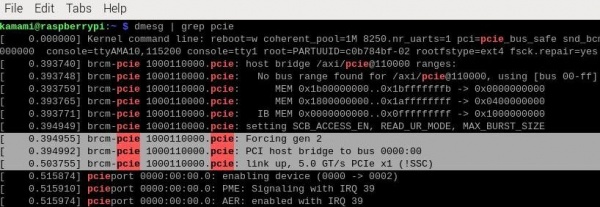
In a situation where the PCIe x1 interface is not properly started, we will find an entry similar to this:
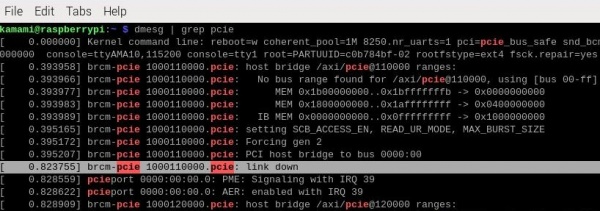
The message "Link down" means that connecting the drive failed.
In this situation, it is worth modifying the contents of the configuration file config.txt. In the console, type:
sudo nano /boot/firmware/config.txt
(in earlier versions of the operating system, the file config.txt was placed directly in the /boot directory)

At the end of the file (scroll to the bottom with the arrows), add the line:
dtparam=nvme
Then save the changes using the Ctrl+O keys, close the editor using the Ctrl+X keys, and restart the system.
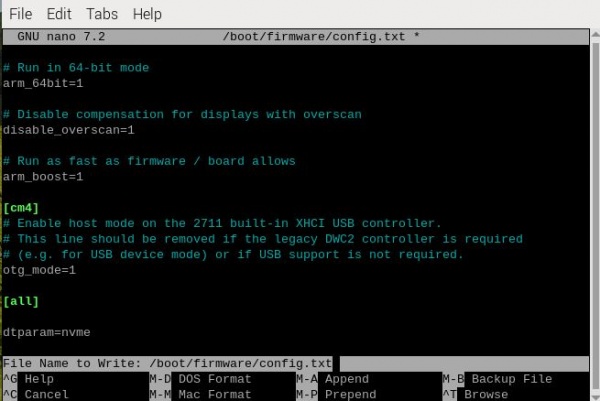
If these actions do not work, it means that the connected drive is not compatible with the Raspberry Pi 5 computer.
Increasing the speed of the PCIe interface
The PCIe interface of the Raspberry Pi 5 computer starts by default in gen 2 mode, which allows communication with a maximum throughput of 5 GT/s (Gigatransfers per second). There is a way to start gen 3 mode, which offers a throughput of up to 8 GT/s. To do this, modify the contents of the configuration file config.txt.
In the console, type:
sudo nano /boot/firmware/config.txt
(in earlier versions of the operating system, the file config.txt was placed directly in the /boot directory).
At the end of the file (scroll down with the arrows) add the line:
dtparam=pciex1_gen=3
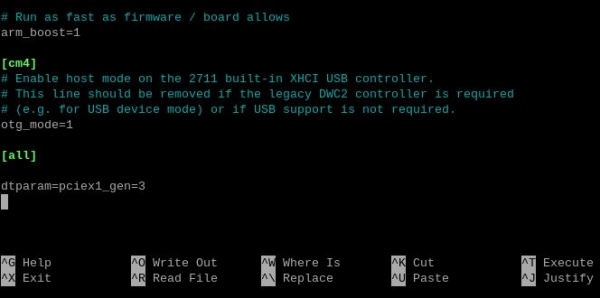
Then save the changes using the Ctrl+O keys, close the editor using the Ctrl+X keys and restart the system.
To check if the modification worked, you can analyze the system boot messages. Open the console window (Terminal), e.g. using the Ctrl+Alt+T key combination and enter:
dmesg | grep pcie
You will see content similar to the one in the screenshot below:
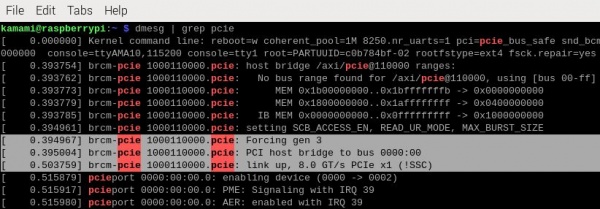
You can see the entries: „Forcing gen 3” and „Link up, 8.0 GT/s PCIe x1”, which means that the modification was successful. However, this does not guarantee full system stability under all conditions.
Setting the boot sequence by editing the contents of the EEPROM memory
If for some reason we are unable to update the Raspberry Pi 5 computer software, some of the settings related to system bootu from the NVME disk may be unavailable. In such a situation, you can set the appropriate sequence by directly editing the contents of the EEPROM memory of the Raspberry Pi 5 computer.
Open the console window (Terminal), e.g. using the key combination Ctrl+Alt+T and enter:
sudo rpi-eeprom-config --edit
Replace the line starting with "BOOT_ORDER="' with "BOOT_ORDER=0xf461".

This entry sets a safe sequence that causes the system to load from the NVME M.2 disk if no memory card is detected. Then save the changes using the Ctrl+O keys, close the editor using the Ctrl+X keys and restart the system.
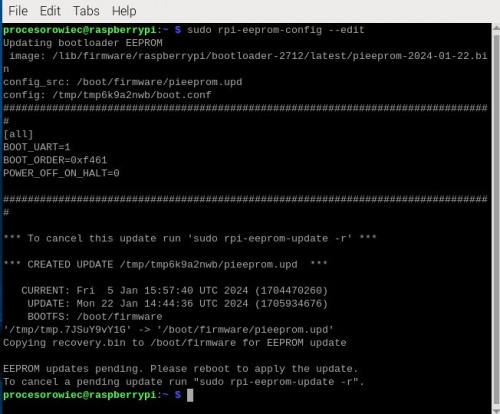
Creating a partition on a new NVME drive
The NVME M.2 drive does not have to be the main drive on which the operating system will be installed - it can act as a secondary drive for storing large amounts of data. When a brand new NVME M.2 drive is connected to the Raspberry Pi, it will be necessary to create a partition to make it visible in the file system.
Raspberry Pi 5 allows you to install the GParted software tool, which is used to create partitions and other related operations, and is operated via an intuitive graphical interface. To install GParted, open a console window (Terminal), e.g. using the key combination Ctrl+Alt+T and enter the following command to start the installation:
sudo apt install gparted -y
After the installation is complete, enter the command:
gparted
and in the window that appears, enter the password to access the system:
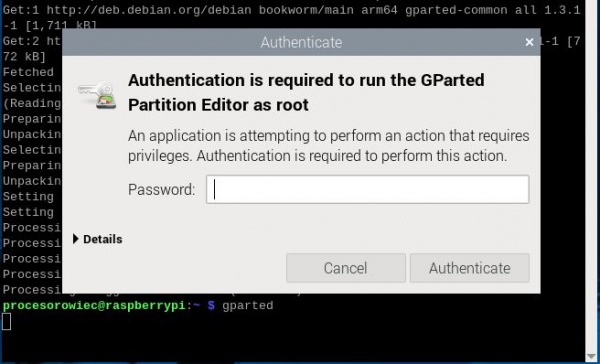
The main program window is shown in the screenshot below. The interface is clear and intuitive:
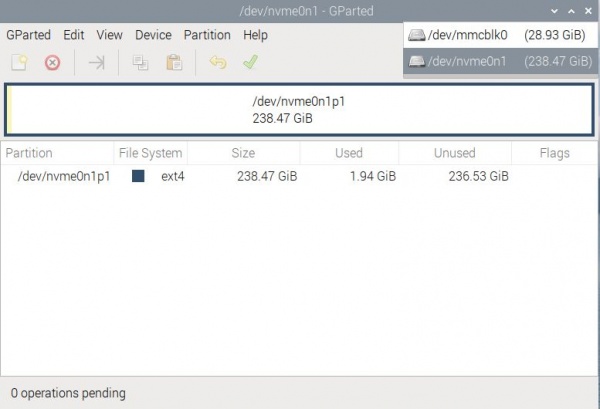
In the upper right corner there is a field to select the disk on which the operations will be performed, in the Partition tab there are the most important commands, such as creating a new partition - New. All operations must be confirmed with the green button.
Once the partition is created, it will become visible in the file manager, similar to the screenshot below:
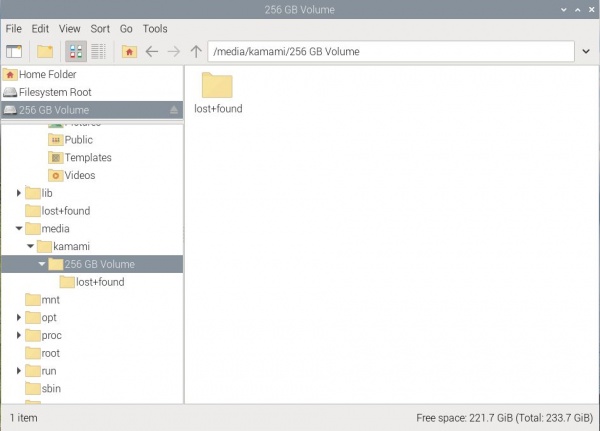
Preparing a memory card with an operating system for Raspberry Pi 5
The software that allows you to prepare the memory card can be downloaded from https://www.raspberrypi.com/software/.
After installing and running it, select:
computer model: RASPBERRY PI 5,
operating system: RASPBERRY PI OS (64-BIT),
disk: here we indicate the memory card (or other memory, e.g. USB pendrive).
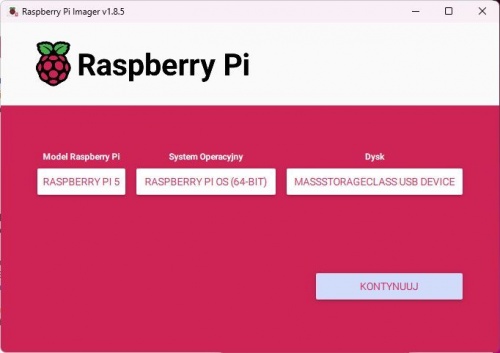
Click CONTINUE, and then select EDIT SETTINGS.
Now it is worth setting the login and password for access to the installed system, which is necessary to maintain its security. Then you need to provide the Wi-Fi access parameters (if you are going to use this form of internet access) and fill in the information about the location.
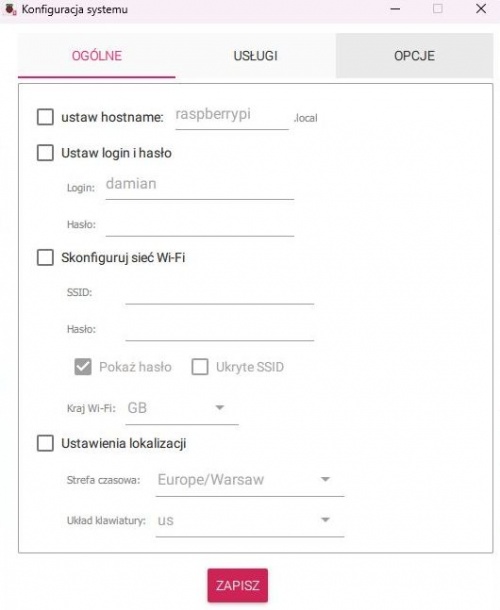
To apply the settings, click SAVE and in the next window confirm YES. A warning will be displayed that all data currently on the memory card will be deleted. Click YES if you agree to this and want to continue.
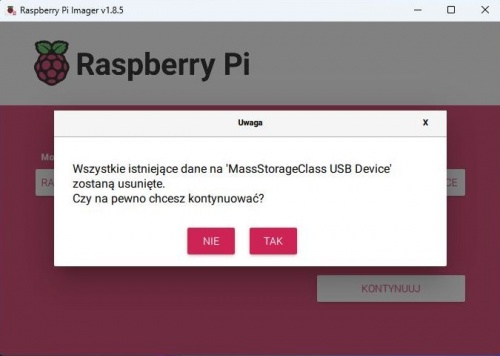
Installing the system on the memory card will take from a few to a dozen or so minutes. After the actions are completed, if everything went well, a corresponding message will be displayed and the memory card with the operating system will be ready.
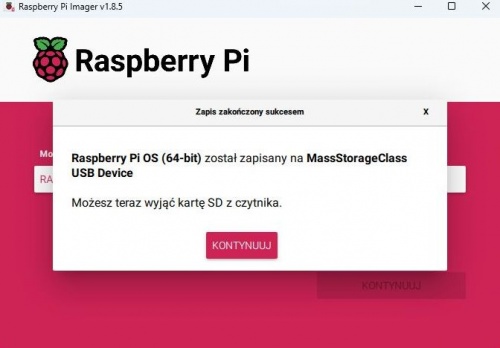
Additional features of the KAmod RPi5 PCIe-M.2 adapter
Connection using only the ribbon cable
The KAmod RPi5 PCIe-M.2 adapter can work properly when connected to the Raspberry Pi 5 using only the FFC 16/0.5 ribbon cable. The only condition that must be met is that the current consumption of the NVME M.2 drive cannot exceed 1 A.
The M.2 standard requires a power supply with a voltage of 3.3 V and a current of up to 3 A. The rated current consumption, provided by the drive manufacturers, applies to work with the full PCI Express GenX x4 interface, at maximum drive performance, while when working with the x1 interface and lower performance, the current consumption is lower. In practice, many drives can operate correctlyaw with a current limit of 1 A with the PCI Express Gen2 x1 interface used in the Raspberry Pi 5.
Fan installation
The KAmod RPi5 PCIe-M.2 adapter board has oblong holes that improve the circulation of air cooling the Raspberry Pi 5 computer. The design of the adapter does not block the possibility of using a radiator with a fan dedicated to the Raspberry Pi 5. If additional cooling is not installed, it is possible to mount a 25x25 mm fan on the bottom side of the adapter board. The board has holes for placing appropriate screws.
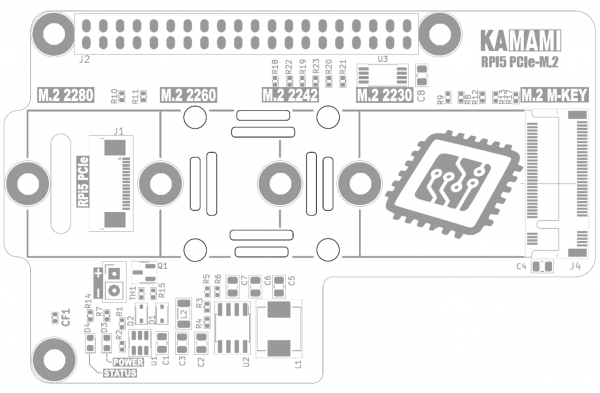
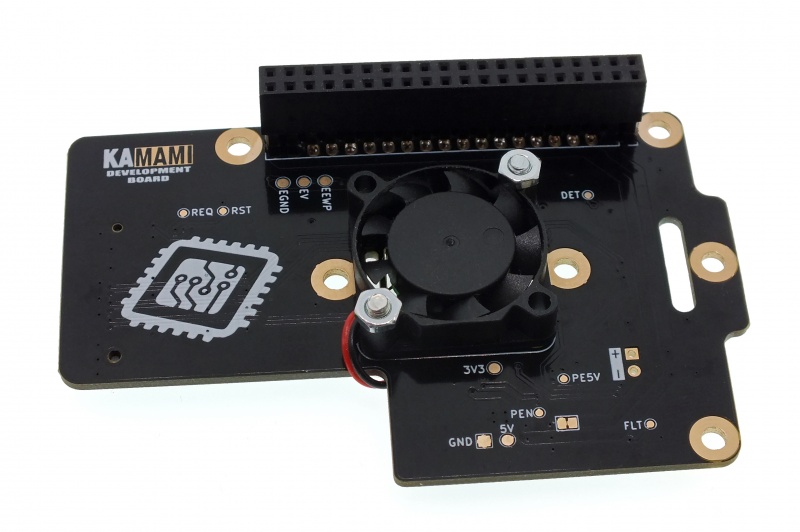
Fan power supply
There is a connector on the board that can power an additional fan. It provides voltage that is regulated by temperature - the higher the adapter temperature, the closer the voltage will be to 5 V. Additionally, the fan will be completely turned off after the computer is turned off (in standby mode).
The maximum fan current cannot exceed 0.3 A.
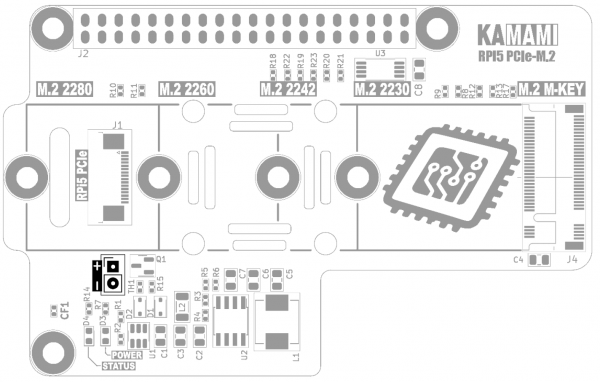
Constant power supply for NVME disk=
The adapter supplies power to the NVME M.2 disk continuously - the disk is powered even when the Raspberry Pi 5 computer is turned off (in standby mode). Some disks allow the operating system to start correctly only in this configuration.
The KAmod RPi5 PCIe-M.2 adapter also offers another configuration - the disk power will be turned off when the Raspberry Pi 5 is turned off (in standby mode). This solution allows you to reduce the power consumption of the entire set in standby mode, but may disrupt the correct startup of the system. To enable power saving mode, remove the element marked CF1 from the board.
